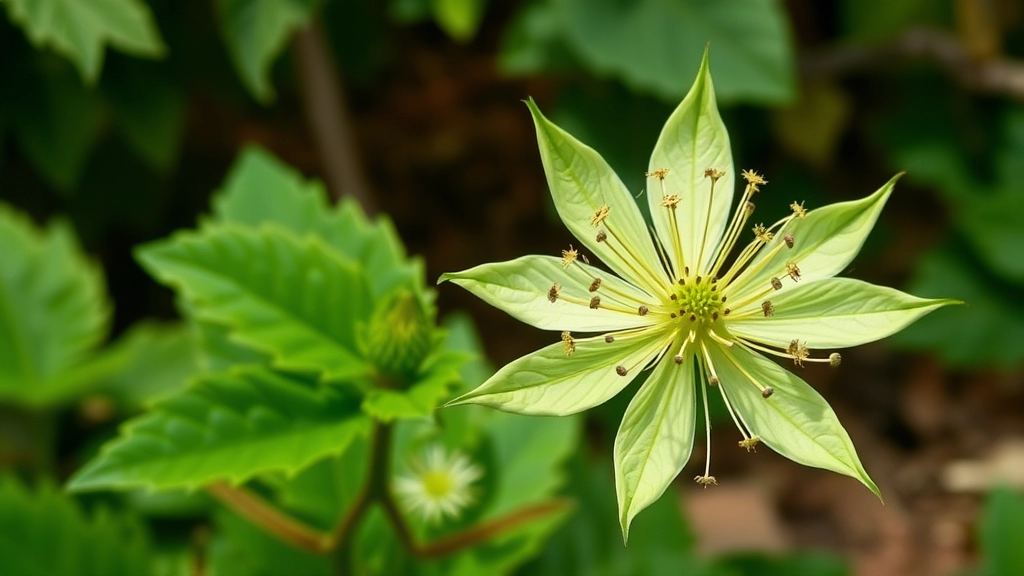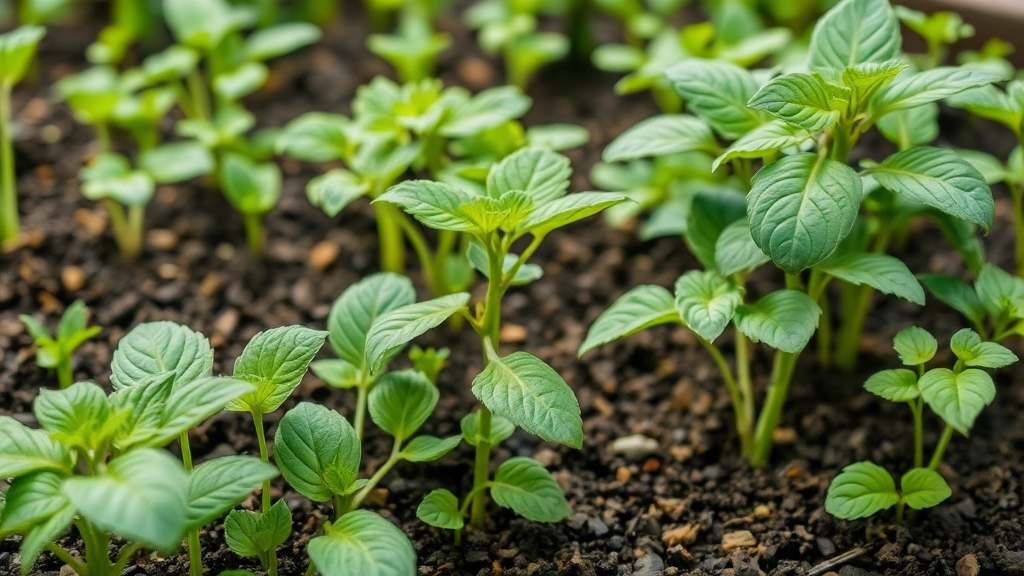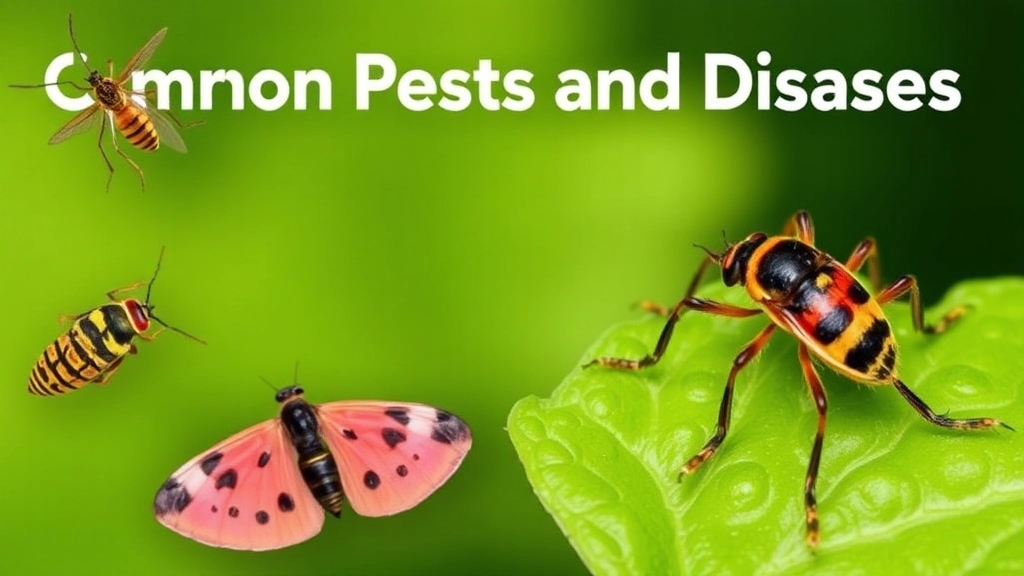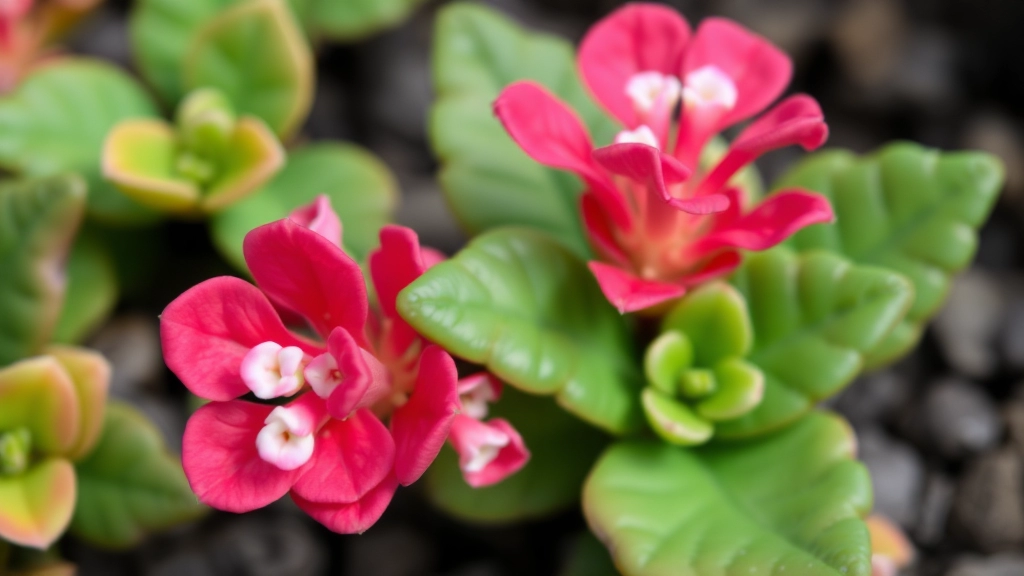Kalanchoe Schizophylla: A Succulent Gem
As a plant enthusiast and succulent lover, I’m thrilled to introduce you to the fascinating world of Kalanchoe schizophylla. This unique succulent, native to Madagascar, is a true gem with its deeply divided leaves that give it its distinctive ‘split leaf’ name. From its compact size to its resilient nature, Kalanchoe schizophylla offers a perfect blend of beauty and low-maintenance care that’s sure to captivate both novice gardeners and seasoned plant collectors alike.
In this comprehensive guide, we’ll explore everything from the botanical characteristics and natural habitat of Kalanchoe schizophylla to practical care tips and propagation techniques. Whether you’re looking to add a conversation starter to your desk or expand your succulent collection, this resilient little plant has much to offer. So, let’s dive in and discover why Kalanchoe schizophylla might just become your new favorite plant companion!
Overview of Kalanchoe schizophylla
Ever heard of Kalanchoe schizophylla? It’s a real gem in the succulent world.
This little beauty’s got some serious character.
Native to Madagascar, it’s part of the Crassulaceae family.
What makes it stand out? Its unique, deeply divided leaves.
They’re not your average succulent leaves – they’re split into segments.
That’s where it gets its name ‘schizophylla’, meaning ‘split leaf’.
It’s a compact plant, perfect for small spaces or as a quirky desk companion.
But don’t let its size fool you – it’s tough as nails.
Kalanchoe schizophylla is a survivor, adapting to various conditions.
It’s got this cool trick up its sleeve – it can propagate from leaf cuttings.
Talk about low-maintenance! This plant’s a dream for busy folks or newbie gardeners.
But here’s the kicker – it’s not just a pretty face.
Kalanchoe schizophylla has potential medicinal properties too.
Some folks use it in traditional medicine, but that’s a whole other story.
Bottom line? If you’re after a unique, easy-care succulent, Kalanchoe schizophylla’s your guy.
It’s a conversation starter, a resilient little trooper, and a joy to grow.
So, ready to dive deeper into the world of Kalanchoe schizophylla? Let’s go!
Botanical Characteristics

Alright, let’s dive into the botanical characteristics of Kalanchoe schizophylla. This plant’s a real head-turner, and I’m excited to break it down for you.
Leaves: The Show-Stoppers
- Shape: Imagine a bunch of tiny, fleshy fingers reaching out from the stem. That’s what you’re looking at.
- Colour: Usually a deep green, but sometimes they’ll surprise you with a reddish tinge.
- Texture: Smooth and glossy, like they’ve just had a manicure.
Stems: The Support Crew
- Structure: Thick and sturdy, these guys mean business.
- Growth pattern: They tend to branch out, creating a bushy look.
Flowers: The Cherry on Top
- Appearance: Small but mighty, these blooms pack a punch.
- Colour: Often a vibrant pink or red, they’re real attention-grabbers.
- Blooming season: Keep an eye out in late winter to early spring.
Size: The Big Picture
- Height: Can reach up to 30cm tall when it’s feeling ambitious.
- Spread: Likes to stretch out, sometimes up to 60cm wide.
Now, here’s something cool – the “schizophylla” in its name? It’s Greek for “split leaf”. Makes sense when you see those finger-like leaves, right?
One thing I love about this plant is how it changes throughout the year. In winter, it might look a bit sleepy, but come spring, it’s like it’s had a shot of espresso.
Remember, every Kalanchoe schizophylla is unique. Like people, they’ve got their own quirks and personalities. Some might be more compact, others more sprawling. That’s what makes growing them so fun – you never know exactly what you’re gonna get!
So, next time you’re eyeing up a Kalanchoe schizophylla, take a moment to appreciate its botanical bling. From its funky leaves to its eye-catching flowers, this plant’s got character in spades. If you’re interested in other Kalanchoe varieties, you might want to check out the Kalanchoe blossfeldiana, which is known for its vibrant blooms. For those who prefer a more unique look, the Kalanchoe tomentosa ‘Teddy Bear’ is a fuzzy and adorable option.
Natural Habitat and Distribution
Ever wondered where this funky plant comes from? Let’s break it down.
Kalanchoe schizophylla’s roots (pun intended) trace back to Madagascar.
Yep, that island off the coast of Africa is its original stomping ground.
But here’s the kicker: it’s not spread all over the island.
This plant’s a bit picky about where it hangs out.
You’ll find it chilling in the central and southern parts of Madagascar.
Why there? Well, it’s all about the climate and terrain.
These areas have just the right mix of heat, light, and rocky landscapes.
Think dry, sunny spots with well-draining soil. That’s its happy place.
In the wild, it’s often found clinging to rocky outcrops or nestled in sandy soils.
It’s a tough cookie, adapted to survive in areas where water’s not always plentiful.
But here’s a heads up: it’s not common to find this plant in other parts of the world naturally.
If you spot one outside Madagascar, it’s probably been introduced by plant enthusiasts.
So, if you’re growing one at home, you’re basically recreating a little slice of Madagascar.
Pretty cool, right?
Remember, understanding its natural habitat is key to giving it the best care.
Growing Conditions and Requirements

Alright, let’s chat about how to keep your Kalanchoe schizophylla happy and thriving. Trust me, it’s not rocket science, but there are a few key things you’ll want to nail down.
Light: The Sun’s Sweet Spot
These succulents are sun-lovers, but they’re not trying to get a sunburn. Here’s the deal:
- Bright, indirect light is the golden ticket
- A few hours of morning sun? Perfect
- Afternoon sun? That’s a bit much, might scorch the leaves
Think of it like this: imagine you’re at the beach. You want that warm glow, not the “ouch, I’m a lobster” feeling. That’s what your Kalanchoe’s after.
Soil: The Foundation of Success
Now, let’s talk dirt. But not just any old dirt:
- Well-draining soil is a must
- Mix regular potting soil with sand or perlite
- Aim for a 50/50 mix
Why? These plants hate wet feet. They’re like that friend who always forgets their wellies – they just don’t do well in soggy conditions.
Water: The Goldilocks Approach
Watering is where most people mess up. It’s all about finding that “just right” balance:
- Let the soil dry out between waterings
- Stick your finger in the soil – if it’s dry 2 inches down, it’s time to water
- Water thoroughly, but don’t let it sit in water
Think of it like this: your Kalanchoe is more camel than fish. It stores water in its leaves, so it can handle a bit of drought.
Temperature: Keeping It Cozy
These plants aren’t too fussy about temperature, but they do have their limits:
- Ideal range: 60-75°F (15-24°C)
- Can handle a bit cooler, but not below 50°F (10°C)
- Avoid sudden temperature changes
Imagine your Kalanchoe as that friend who’s always comfortable – not too hot, not too cold. That’s what you’re aiming for.
Humidity: Not a Big Deal
Good news! Kalanchoe schizophylla isn’t a drama queen about humidity:
- Average room humidity is fine
- No need for misting or humidifiers
- Can handle dry air like a champ
It’s like that low-maintenance friend who’s happy wherever they are. No special treatment needed.
Fertilizer: A Little Boost Goes a Long Way
These plants aren’t big eaters, but a little snack now and then doesn’t hurt:
- Feed with a balanced, water-soluble fertilizer
- Once a month during growing season (spring and summer)
- Skip the fertilizer in fall and winter
Think of it like giving your plant a vitamin supplement. It’s not essential, but it can help it look its best.
So there you have it – the inside scoop on keeping your Kalanchoe schizophylla happy. Remember, these plants are pretty chill. They’re not looking for five-star treatment, just the basics done right. Get these growing conditions sorted, and your Kalanchoe will be living its best life in no time. If you’re interested in other Kalanchoe varieties, check out the Kalanchoe tomentosa varieties or learn about the growth patterns of Kalanchoe blossfeldiana.
Propagation Techniques
Let’s talk about growing more Kalanchoe schizophylla, shall we?
It’s easier than you might think.
Here’s the deal: you’ve got a few options.
Leaf cuttings? Yep, that works.
Stem cuttings? Absolutely.
Seeds? If you’re feeling adventurous, sure.
But here’s my favourite method – leaf propagation.
Why? It’s simple and kinda fun.
Here’s how you do it:
- Snag a healthy leaf
- Let it dry for a day or two
- Pop it on some well-draining soil
- Wait for the magic to happen
Boom! Baby plants in no time.
Stem cuttings are pretty straightforward too:
- Cut a stem, about 10cm long
- Remove lower leaves
- Let it callous over
- Stick it in some soil
- Keep it moist, not soggy
Seeds? Bit trickier, but doable:
- Sow on top of soil
- Keep warm and slightly damp
- Be patient – they’re slow starters
Remember, Kalanchoe schizophylla likes it warm.
So, whatever method you choose, keep that in mind.
Got any propagation tricks up your sleeve? I’d love to hear ’em!
Common Pests and Diseases

Alright, let’s chat about the not-so-fun stuff that can bug your Kalanchoe schizophylla. Trust me, I’ve been there, and it’s not pretty. But don’t worry, we’ll tackle this together.
Pesky Invaders
First up, we’ve got those annoying little critters that love to munch on our precious plants:
- Mealybugs: These white, fuzzy pests are like tiny vampires, sucking the life out of your Kalanchoe.
- Spider mites: Barely visible, but they can cause some serious damage if left unchecked.
- Aphids: Small, but mighty in their plant-destroying abilities.
I remember when I first spotted mealybugs on my Kalanchoe. It was like finding an unwelcome guest at a party. But here’s a quick fix: dab them with a cotton swab soaked in rubbing alcohol. Works like a charm!
Nasty Diseases
Now, let’s talk about the invisible enemies:
- Root rot: This is a biggie for Kalanchoe schizophylla. Overwatering is usually the culprit.
- Powdery mildew: Looks like someone sprinkled flour on your plant. Not cool.
- Leaf spot: Brown or black spots on leaves that can spread if not dealt with.
I once nearly lost a Kalanchoe to root rot. Lesson learned: always check the soil moisture before watering!
Prevention is Key
Here’s the deal: keeping your Kalanchoe schizophylla healthy is your best defence. It’s like giving your plant a shield against these pests and diseases. How? Simple:
- Don’t overwater. Seriously, this is crucial.
- Give it enough light. These guys love the sun.
- Keep the air flowing. Good ventilation is your friend.
- Clean your tools. Don’t spread problems from one plant to another.
Remember, a happy Kalanchoe is a resilient Kalanchoe. Keep an eye out for any changes in your plant’s appearance. Catching problems early can save you a lot of headaches down the road.
So, there you have it. The common pests and diseases that might try to crash your Kalanchoe party. But armed with this knowledge, you’re ready to keep your plant thriving. Stay vigilant, plant lovers!
Benefits and Uses of Kalanchoe schizophylla
Ever wondered why plant enthusiasts rave about Kalanchoe schizophylla? Let’s dive in.
This little beauty isn’t just a pretty face.
It’s got some serious perks up its leaves.
First off, it’s a champion air purifier.
Yep, it’s like having a natural air freshener in your home.
But wait, there’s more!
Kalanchoe schizophylla is a low-maintenance dream.
Perfect for busy folks or those with a not-so-green thumb.
It’s also a great mood booster.
Just looking at its unique leaves can lift your spirits.
Now, let’s talk practicality:
- Space-saver: Ideal for small apartments or offices
- Drought-tolerant: Forgets to water? No problem
- Long-lasting: Keeps its good looks for ages
But here’s the real kicker:
Kalanchoe schizophylla is a conversation starter.
Its unusual leaf shape always gets people talking.
It’s like having a living piece of art.
And for the crafty types?
This plant’s leaves can be used in floral arrangements.
Talk about versatility!
So, whether you’re a plant newbie or a seasoned pro, Kalanchoe schizophylla has something for everyone.
It’s not just a plant, it’s a lifestyle upgrade.
Care and Maintenance Tips

Alright, let’s dive into how to keep your Kalanchoe schizophylla thriving. Trust me, it’s not rocket science, but there are a few key things you’ll want to nail down.
Watering Wisdom
First up, let’s talk water. These succulents are pretty chill when it comes to their drinking habits:
- Water deeply, but infrequently
- Let the soil dry out between waterings
- Cut back on water during winter months
Pro tip: If you’re unsure, it’s better to underwater than overwater. These guys can bounce back from drought, but root rot? That’s a whole other ballgame.
Light and Location
Kalanchoe schizophylla loves basking in the sun, but not too much:
- Bright, indirect light is ideal
- A few hours of morning sun won’t hurt
- Avoid harsh afternoon rays
I once put mine in a south-facing window without any shade. Big mistake. The leaves got sunburned faster than I do at the beach!
Soil and Fertiliser
Here’s the dirt on soil:
- Well-draining potting mix is crucial
- Add some perlite or sand for extra drainage
- Fertilise sparingly during growing season
Remember, these plants aren’t big eaters. A little fertiliser goes a long way.
Temperature and Humidity
Kalanchoe schizophylla isn’t too fussy about temperature, but it does have its limits:
- Ideal range: 15-24°C (59-75°F)
- Can tolerate brief periods below 10°C (50°F)
- Prefers average household humidity
Repotting
Don’t go crazy with repotting. These plants like to be a bit snug:
- Repot every 2-3 years
- Choose a pot just slightly larger than the current one
- Spring is the best time for repotting
Grooming
Keep your Kalanchoe schizophylla looking sharp with minimal effort:
- Remove dead or yellowing leaves
- Pinch off spent blooms to encourage more flowers
- Wipe leaves gently with a damp cloth to remove dust
Remember, caring for your Kalanchoe schizophylla doesn’t have to be a chore. With these tips, you’ll be well on your way to keeping your plant happy and healthy. And who knows? You might even find yourself chatting to it over your morning coffee. No judgement here â I do it all the time! If you’re interested in other Kalanchoe varieties, check out the Kalanchoe luciae or the unique Kalanchoe tomentosa ‘Nigra’ for some variety in your succulent collection.
Seasonal Care and Pruning
Alright, let’s chat about keeping your Kalanchoe schizophylla happy all year round.
Seasonal care? It’s not as complicated as it sounds, trust me.
Spring and Summer:
- These are your plant’s party seasons
- Water more often, but don’t go overboard
- Feed it every couple of weeks with a balanced fertiliser
- Keep an eye out for any pests trying to crash the party
Autumn and Winter:
- Time to chill out a bit
- Cut back on watering – let the soil dry out between drinks
- No more fertiliser – your plant’s taking a break
- Move it to a warmer spot if you live somewhere chilly
Pruning? It’s like giving your Kalanchoe a haircut.
- Snip off any dead or yellowing leaves
- If it’s getting too lanky, trim it back a bit
- Use clean, sharp scissors to avoid any plant drama
Pro tip: Spring’s the best time for a good pruning session.
Remember, Kalanchoe schizophylla’s pretty chill. Don’t stress too much about perfect care.
Just keep an eye on it, adjust as needed, and you’ll be golden.
Frequently Asked Questions
Is Kalanchoe schizophylla toxic to pets?
Look, I get it. You love your plants, but you love your furry friends more. Here’s the deal: Kalanchoe schizophylla, like many Kalanchoe species, can be toxic if ingested. It’s not the most dangerous plant out there, but it’s best to keep it out of reach of curious pets and kids. If you’re worried, pop it on a high shelf or in a hanging basket.
How often should I water my Kalanchoe schizophylla?
This is the million-dollar question, isn’t it? These succulents are pretty chill when it comes to water. They’re like that friend who’s happy with a drink every now and then but doesn’t need constant attention. Let the soil dry out between waterings. In summer, that might mean once a week. In winter, you can stretch it to every two or three weeks. The key is to feel the soil – if it’s dry an inch down, it’s time for a drink.
Can I grow Kalanchoe schizophylla outdoors?
Sure thing, if you live in the right climate. These plants are native to Madagascar, so they love warmth and sun. If you’re in USDA zones 10-11, you’re golden. For the rest of us, it’s best to keep them as indoor plants or move them outside during the warm months. Just remember, they can’t handle frost, so bring them in when it gets chilly.
Why are the leaves on my Kalanchoe schizophylla turning yellow?
Ah, the dreaded yellow leaves. It’s usually a sign of overwatering. These plants are succulents, remember? They store water in their leaves and stems. Too much water, and they’ll start to look a bit sickly. Cut back on watering and make sure your pot has good drainage. If the problem persists, check for root rot.
How do I propagate Kalanchoe schizophylla?
This is where the fun begins! Kalanchoe schizophylla is a breeze to propagate. You can do it from leaf cuttings or stem cuttings. Just snip off a healthy leaf or stem, let it callous over for a day or two, then pop it in some well-draining soil. Keep it slightly moist, and in a few weeks, you’ll see roots forming. It’s like magic, I swear.
Does Kalanchoe schizophylla flower?
You bet it does! But here’s the kicker – it’s not as showy as some of its Kalanchoe cousins. The flowers are small and greenish-white. They’re not going to stop traffic, but they add a nice touch to the plant’s overall look. If you want flowers, make sure your plant gets enough light and don’t overwater.
How big does Kalanchoe schizophylla get?
This isn’t a monster plant, so don’t worry about it taking over your living room. Kalanchoe schizophylla typically grows to about 12-18 inches tall and wide. It’s perfect for small spaces or as part of a larger succulent display.
Remember, growing Kalanchoe schizophylla is all about finding that sweet spot. Give it enough light, don’t drown it, and it’ll reward you with its unique, fleshy leaves and low-maintenance charm. And if you run into any hiccups along the way, don’t sweat it. Plants are resilient, and half the fun is in learning as you go.
Frequently Asked Questions
What makes Kalanchoe schizophylla unique?
Kalanchoe schizophylla stands out due to its distinctive deeply divided leaves, which give it its name ‘schizophylla’ meaning ‘split leaf’. This compact succulent is native to Madagascar and is known for its resilience and ability to propagate easily from leaf cuttings.
How much light does Kalanchoe schizophylla need?
This plant thrives in bright, indirect light. A few hours of morning sun is ideal, but be cautious of harsh afternoon rays which can scorch the leaves. If you notice the leaves stretching or becoming pale, it might need more light.
What’s the best soil for Kalanchoe schizophylla?
Use a well-draining potting mix. A good recipe is to mix regular potting soil with sand or perlite in a 50/50 ratio. This ensures the roots don’t sit in water, which can lead to root rot.
How often should I fertilize my Kalanchoe schizophylla?
These plants aren’t heavy feeders. Feed with a balanced, water-soluble fertilizer once a month during the growing season (spring and summer). Skip fertilizing in fall and winter when the plant’s growth slows down.
Can Kalanchoe schizophylla survive in low humidity?
Absolutely! This plant is quite adaptable and can handle average room humidity with ease. There’s no need for misting or humidifiers, making it a great low-maintenance option for most homes.
What are common pests that affect Kalanchoe schizophylla?
While generally resilient, Kalanchoe schizophylla can sometimes fall prey to mealybugs, spider mites, and aphids. Regular inspection and prompt treatment with insecticidal soap or neem oil can keep these pests at bay.
How do I propagate Kalanchoe schizophylla?
Propagation is easy with leaf cuttings. Simply remove a healthy leaf, let it dry for a day or two, then place it on well-draining soil. Keep the soil lightly moist, and you should see new growth in a few weeks.
Is Kalanchoe schizophylla suitable for beginners?
Yes! Its low-maintenance nature, drought tolerance, and forgiving nature make Kalanchoe schizophylla an excellent choice for novice plant parents or those with busy lifestyles.

